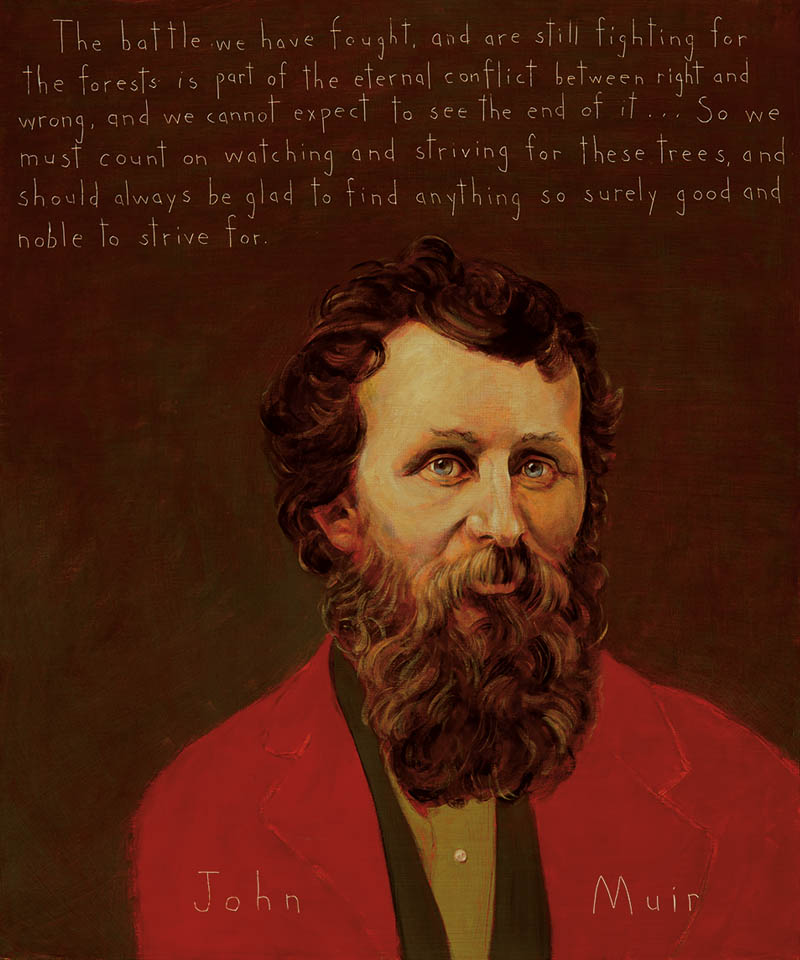
John Muir
Conservationist, Naturalist, Explorer : 1838 - 1914
“The battle we have fought, and are still fighting, for the forests is part of the eternal conflict between right and wrong, and we cannot expect to see the end of it. . . . So we must count on watching and striving for these trees, and should always be glad to find anything so surely good and noble to strive for.”
Biography
Born in Scotland, John Muir came to the United States at age eleven, where he grew up on a farm in Wisconsin. Life on the farm was difficult, but the surrounding woods and fields provided Muir with an escape. He was an inventor who won prizes at the state fair and earned good grades at the University of Wisconsin. In 1867, however, following an industrial accident that left him temporarily blind in one eye, Muir decided to leave the world of mechanized society.
As later described in A Thousand-Mile Walk to the Gulf (1916) – the tenth of Muir’s dozen books – he began this new life in nature by walking from Indiana to Florida. From there he traveled to Cuba and Panama, then crossed the isthmus and sailed north to California. In 1868, when he entered the Sierra Mountains and what would become Yosemite National Park, Muir found the region of his dreams.
Extolling the natural beauty of this area, Muir became America’s most famous and influential conservationist. In 1892 he and his supporters founded the Sierra Club. He served as president of the organization for the rest of his life – “to do something for wildness.” His books, including The Mountains of California (1894) and Our National Parks (1901) attracted the attention of President Theodore Roosevelt. After meeting Muir, Roosevelt was inspired to promote a wide range of innovative conservation programs.
Other books, including The Yosemite (1912) and Travels in Alaska (1915), plus hundreds of magazine articles, advanced the importance of what was then a unique idea: protecting our natural resources. Directly involved in the creation of Yosemite, Sequoia, Mount Rainier, Petrified Forest, and Grand Canyon National Parks, Muir became known as “the Father of our National Parks,” and “the wilderness prophet.” He called himself “a citizen of the universe,” and urged people to “[c]limb the mountains and get their good tidings.”
Programs
Americans Who Tell the Truth (AWTT) offers a variety of ways to engage with its portraits and portrait subjects. Host an exhibit, use our free lesson plans and educational programs, or engage with a member of the AWTT team or portrait subjects.

Education
AWTT has educational materials and lesson plans that ask students to grapple with truth, justice, and freedom.

Exhibits & Community Engagement
AWTT encourages community engagement programs and exhibits accompanied by public events that stimulate dialogue around citizenship, education, and activism.